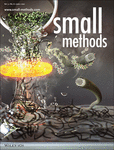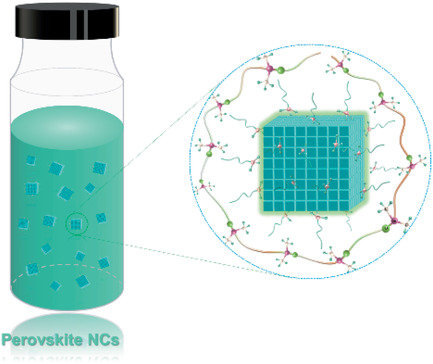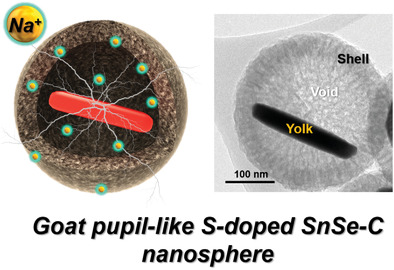Journal list menu
Export Citations
Download PDFs
Cover Picture
Front Cover: Controlled Removal of Surfactants from Double-Walled Carbon Nanotubes for Stronger p-Doping Effect and Its Demonstration in Perovskite Solar Cells (Small Methods 6/2021)
- First Published: 10 June 2021
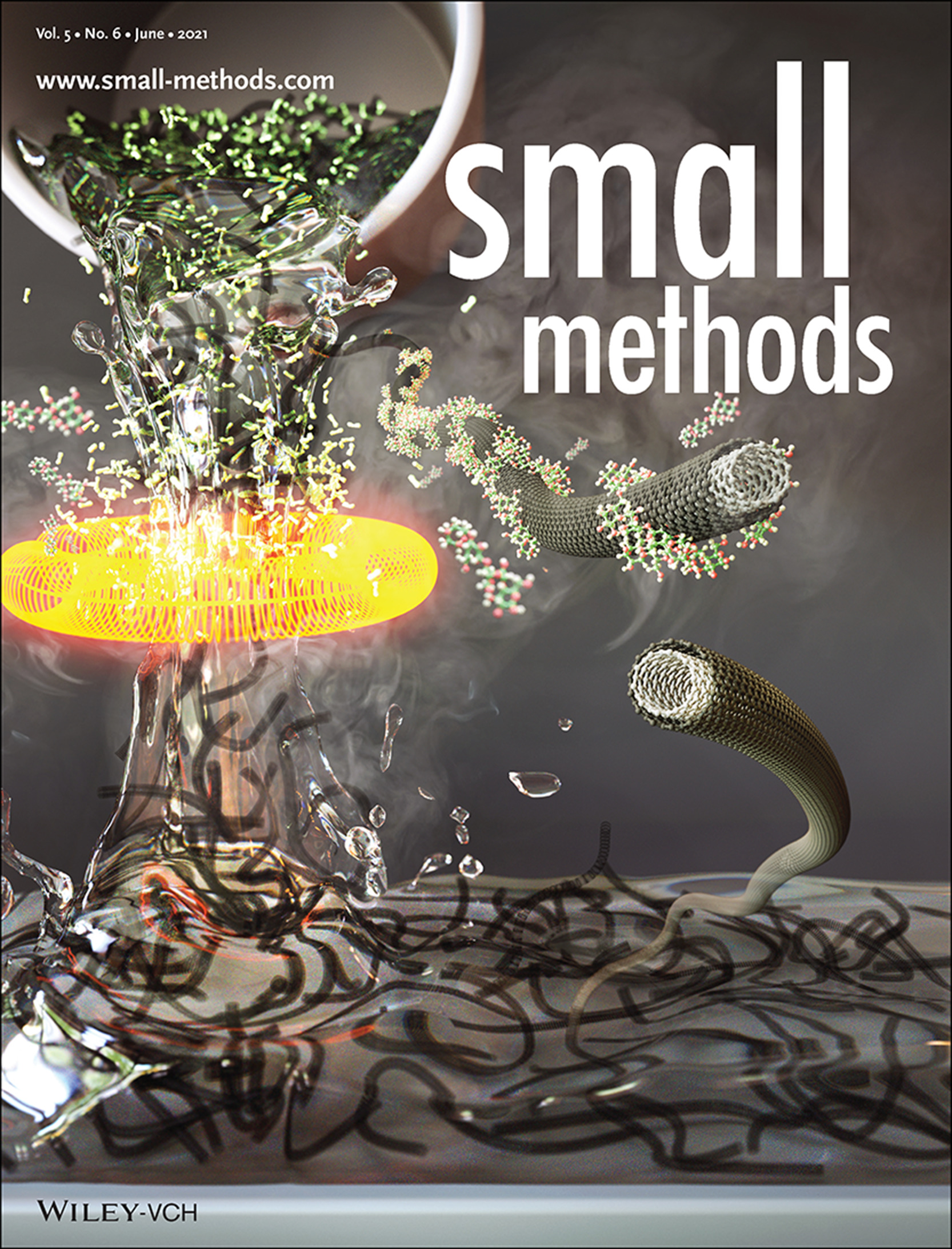
In article number 2100080, Maruyama, Jeon, and co-workers calcinated surfactants from solution-processable double – walled carbon nanotubes by thermal treatment in Ar to minimize the damage to the nanotubes. This increased the doping effectiveness from 31.9% to 59.7%, which was reflected by the efficiency increase in perovskite solar cell from 16.6% to 17.7%.
Inside Front Cover
Inside Front Cover: Single-Cell Sequencing Methodologies: From Transcriptome to Multi-Dimensional Measurement (Small Methods 6/2021)
- First Published: 10 June 2021
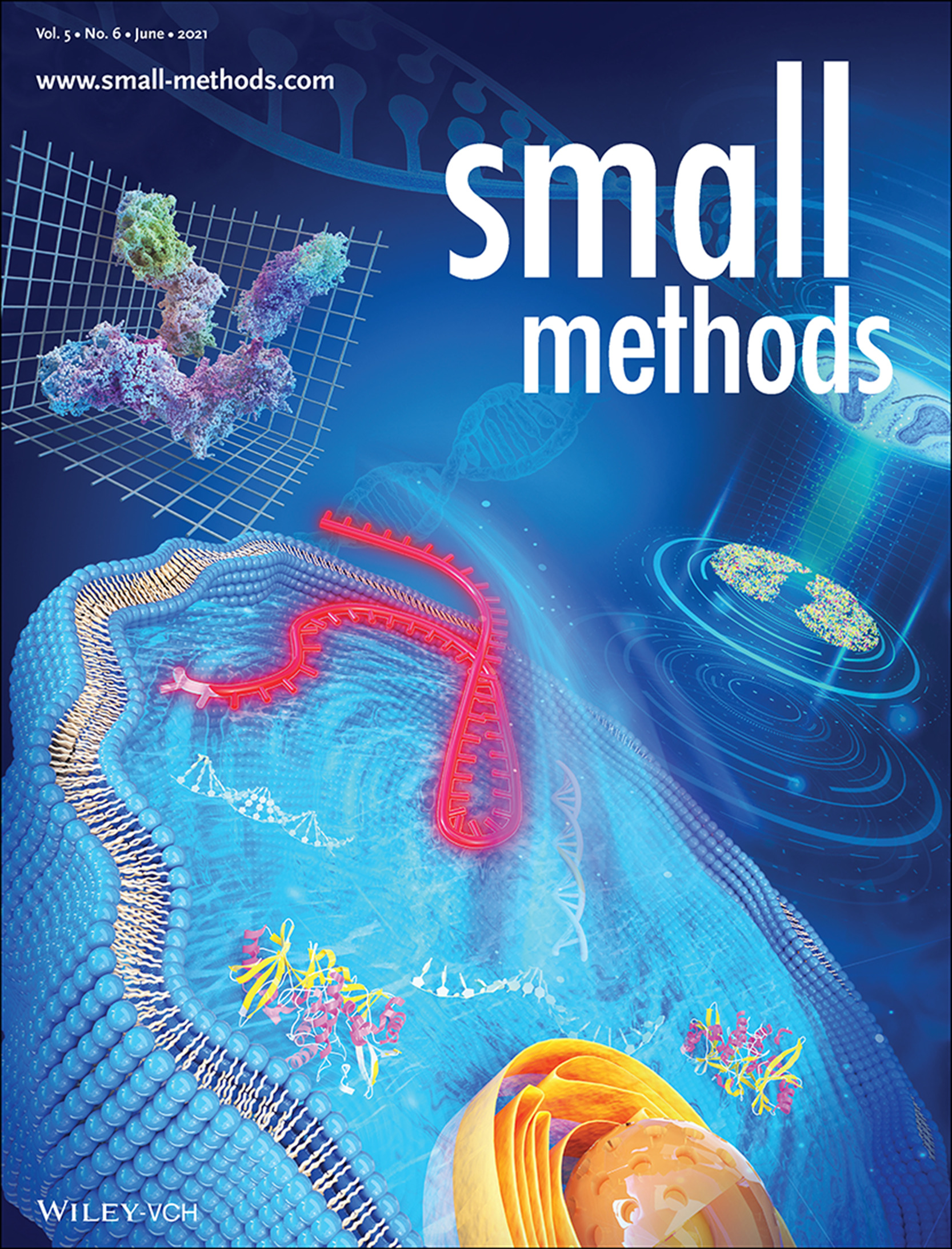
In article number 2100111, Song, Yang, and co-workers summarize recent advances in single-cell transcriptome sequencing and multi-dimensional profiling. The investigation of mRNA enables the interrogation of gene expression pattern, revealing cell-to-cell heterogeneity. The multi-dimensional measurement, including spatially and temporally resolved transcriptome analysis, and multi-omics profiling allows a more comprehensive overview and understanding of biological systems.
Inside Back Cover
Inside Back Cover: Wafer-Scale Oxygen-Doped MoS2 Monolayer (Small Methods 6/2021)
- First Published: 10 June 2021
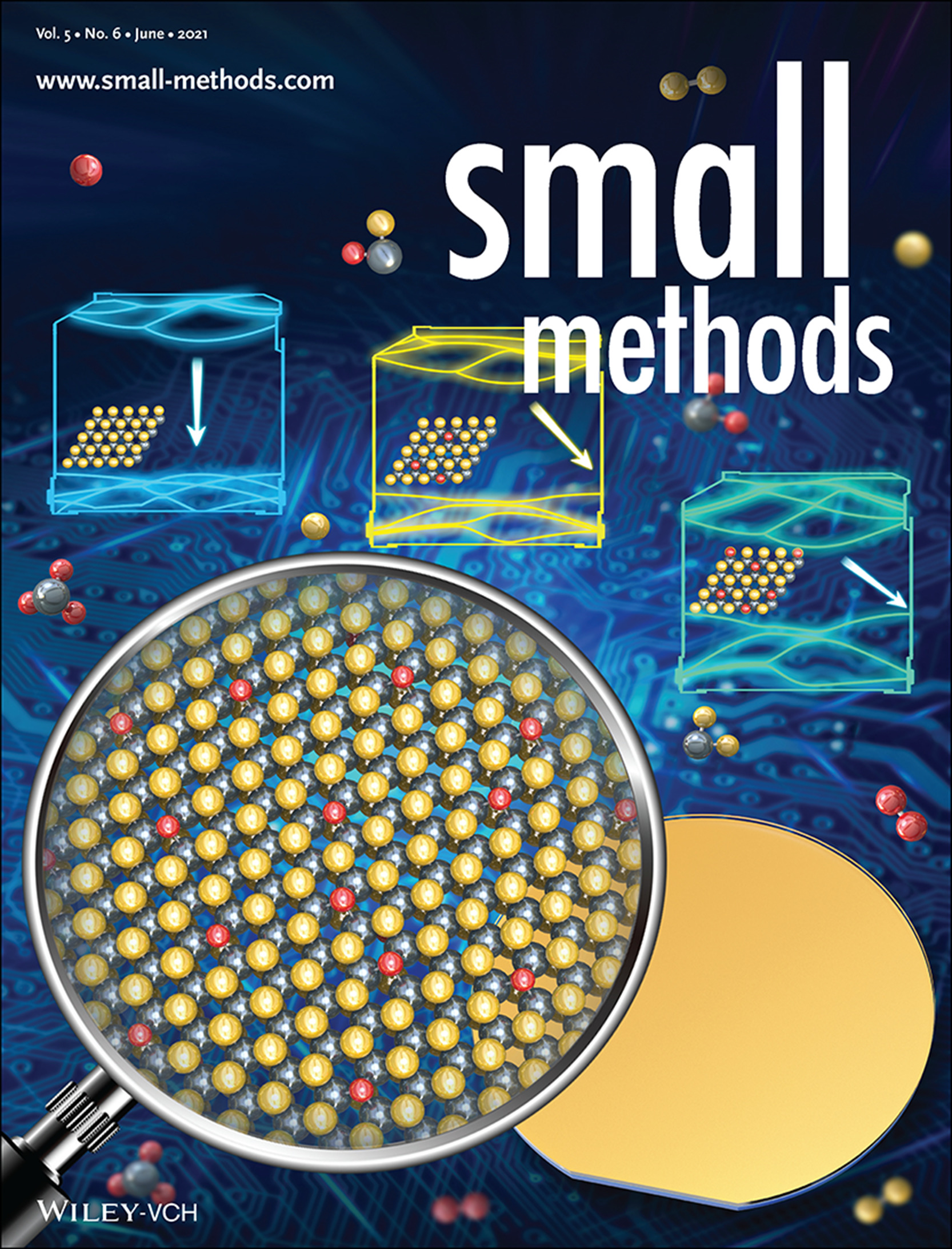
In article number 2100091, Yang, Zhang, and co-workers realize in situ substitutional oxygen doping of 2-inch wafer-scale monolayer MoS2 through chemical vapor deposition. The doped films (MoS2-xOx) are uniform with tunable doping levels and their bandgaps decrease with the increased oxygen concentrations. Wafer-scale monolayer MoS2-xOx films hold promise on the practical applications for high-performance large-scale 2D electronic devices.
Back Cover
Back Cover: Predictive Value of Folate Receptor-Positive Circulating Tumor Cells for the Preoperative Diagnosis of Lymph Node Metastasis in Patients with Lung Adenocarcinoma (Small Methods 6/2021)
- First Published: 10 June 2021

In article number 2100152, Zhu, Yang, Jiang, and co-workers from Shanghai Pulmonary Hospital established a noninvasive assessment of lymph node metastasis (LNM) in lung adenocarcinoma (LAD) through the detection of folate receptor-positive (FR+) circulating tumor cells (CTCs) methods. Preoperative FR+CTCs' detection showed good correlations with the number of positive lymph nodes (LNs) and the ratio of the number of positive LNs to removed LNs, having good prediction capacity and clinical application.
Masthead
Reviews
Single-Cell Sequencing Methodologies: From Transcriptome to Multi-Dimensional Measurement
- First Published: 17 April 2021
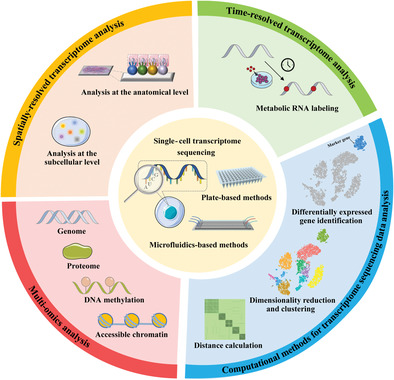
Single-cell RNA sequencing (scRNA-seq) technologies have become essential tools to interrogate single-cell gene expression patterns and multi-dimensional analysis of single cells enables a more comprehensive overview of cellular molecular states and a deeper understanding of biological systems. In this review, the latest technologies enabling scRNA-seq, spatially and time-resolved transcriptome analysis, multi-omics analysis, and computational tools to interpret scRNA-seq data are summarized.
Activation Strategies of Perovskite-Type Structure for Applications in Oxygen-Related Electrocatalysts
- First Published: 17 April 2021
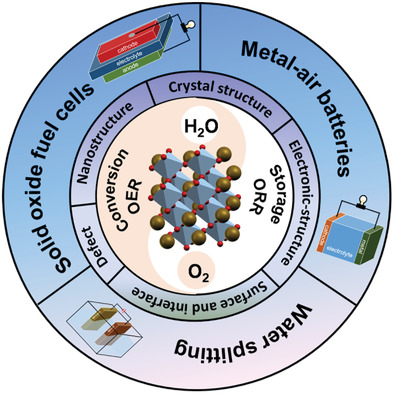
Improving the efficiency of energy storage and conversion devices requires the development of highly efficient and stable oxygen-related catalysts. This review focuses on the basic understanding of oxygen-related reactions. Meanwhile, the recent advances of perovskite-type oxides for catalyzing several key reactions, recent progress in mechanisms, the activation strategies for boosting activity and stability, and the up-to-date electrocatalysts are discussed.
Controlled Hydrothermal/Solvothermal Synthesis of High-Performance LiFePO4 for Li-Ion Batteries
- First Published: 07 May 2021
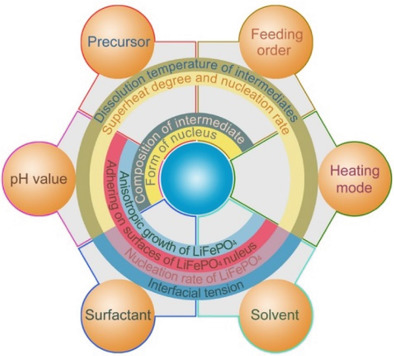
Aiming at the synthesis of high-performance LiFePO4, the research progress in controlled hydrothermal/solvothermal synthesis of LiFePO4 in recent years is comprehensively reviewed and the relationship between reaction condition and nucleation and growth of LiFePO4 is summarized. Moreover, surface decoration, lattice substitution, and defect control of hydrothermally/solvothermally synthesized LiFePO4 are discussed.
Nonhalide Materials for Efficient and Stable Perovskite Solar Cells
- First Published: 12 May 2021

In this review, various non-halide materials reported for perovskite solar cells are described and the dependence of the photovoltaic performance on anions (or in part cations) in non-halide materials is investigated. The importance of synergistic and rational engineering of anions and cations of the non-halide materials is highlighted in order to maximize both efficiency and stability.
Communications
Multiscale 3D Bioprinting by Nozzle-Free Acoustic Droplet Ejection
- First Published: 04 May 2021
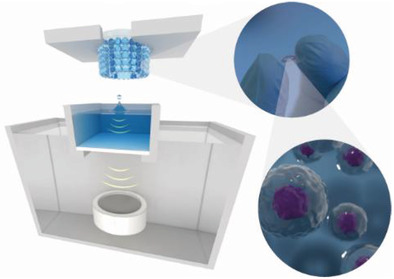
A novel 3D bioprinting method is introduced based on the principle of acoustic droplet ejection. The size of the cell-laden droplets can be modulated over three length scales down to single cell size. The cells are exposed to much lower shear stress compared to established nozzle-based bioprinting techniques. The method holds promise for advanced tissue engineering, regenerative medicine, and mechanobiology.
2D-MA3Sb2I9 Back Surface Field for Efficient and Stable Perovskite Solar Cells
- First Published: 28 April 2021

Here, a special method of 2D-MA3Sb2I9 back surface field (BSF) is highlighted for efficient and stable perovskite solar cells (PSCs). MA3Sb2I9 changes the MAPbI3 surface to be more p-type and thus acts as a BSF to drive charge extraction. More importantly, strong chemical bonding of SbI prohibits ion diffusion, largely enhancing the thermal stability and long-term stability.
Full Papers
In situ Sub-Cellular Identification of Functional Amyloids in Bacteria and Archaea by Infrared Nanospectroscopy
- First Published: 06 May 2021
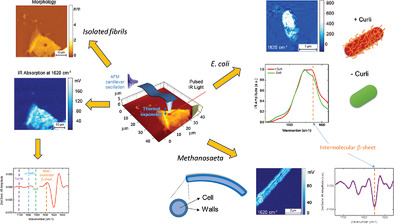
To overcome the limited spatial resolution of conventional bulk and spectroscopic approaches, here, the high sensitivity and spatial resolution of infrared nanospectroscopy to investigate the secondary and quaternary structure of functional amyloids in situ at the sub-cellular scale within E. coli, Pseudomonas, and Methanosaeta cells is applied.
Synthesis of High-Performance Monolayer Molybdenum Disulfide at Low Temperature
- First Published: 19 April 2021

The synthesis of high-quality monolayer MoS2 is important for the fabrication of high-performance next-generation devices. Monolayer MoS2 is grown with a domain size up to 120 µm by the MOCVD at low temperature and the growth mechanism is understood via modeling. Also, a MoS2 transistor shows enhanced performance with high electron mobility of 68.3 cm2 V−1 s−1.
Research Articles
Controlled Removal of Surfactants from Double-Walled Carbon Nanotubes for Stronger p-Doping Effect and Its Demonstration in Perovskite Solar Cells
- First Published: 22 April 2021
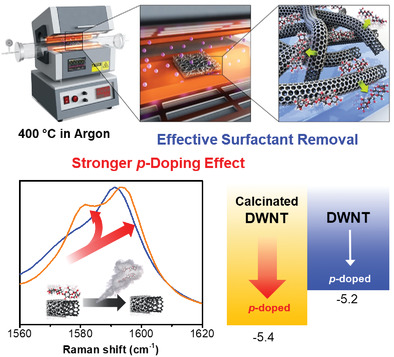
Surfactant-removal from a solution-processed, double-walled carbon nanotube film by thermal treatment in an argon atmosphere enables strong chemical p-doping. Calcinating the nanotubes at 400 °C effectively removes the surfactants with minimal damage to the nanotubes, increasing the doping effectiveness from 31.9% to 59.7%. The enhanced p-doping effect is investigated via perovskite solar cell application. The efficiency increases from 16.6% to 17.7%.
Predictive Value of Folate Receptor-Positive Circulating Tumor Cells for the Preoperative Diagnosis of Lymph Node Metastasis in Patients with Lung Adenocarcinoma
- First Published: 10 April 2021
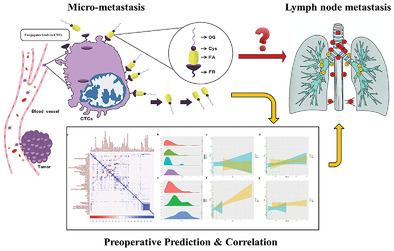
Folate receptor-positive circulating tumor cells (CTCs) improve the diagnostic efficiency of predicting preoperative lymph node metastasis (LNM). A nomogram for predicting preoperative LNM is established, showing good prediction and calibration capacities and an average area under the curve of 0.786 is achieved. Moreover, good correlations are observed between CTC level and nodal classifications.
Wafer-Scale Oxygen-Doped MoS2 Monolayer
- First Published: 10 April 2021
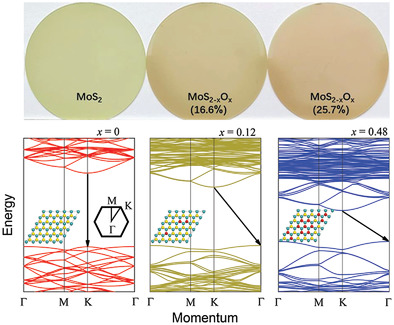
In this work, the in situ oxygen doping of wafer-scale monolayer MoS2 through chemical vapor deposition is reported. The doped films (MoS2−xOx) are uniform with tunable doping levels and their bandgaps decrease with the increased oxygen concentrations. Monolayer MoS2−xOx field-effect transistors and logic devices are fabricated and show excellent electronic performances.
A Gas-Phase Migration Strategy to Synthesize Atomically Dispersed Mn-N-C Catalysts for Zn–Air Batteries
- First Published: 22 April 2021
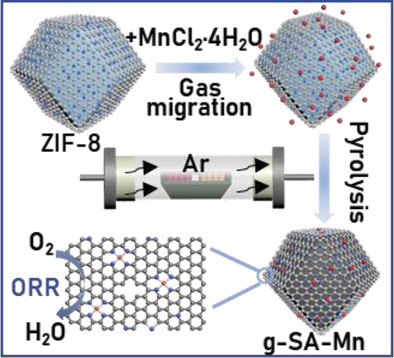
A novel gas-phase migration strategy was developed for the scale synthesis of atomically dispersed manganese and nitrogen co-doped carbon materials (g-SA-Mn) as highly effective catalysts for the oxygen reduction reaction (ORR). The obtained g-SA-Mn catalyst exhibits a remarkable catalytic performance towards ORR and zinc-air batteries, which manifests that this catalyst possesses the potential of practical application in electrochemical devices.
Mechanisms of Progression and Heterogeneity in Multiple Nodules of Lung Adenocarcinoma
- First Published: 19 April 2021
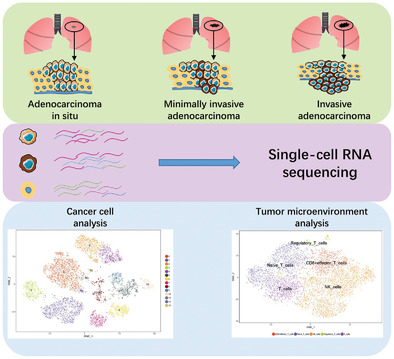
As lung adenocarcinoma progresses in a multiple-step manner which includes adenocarcinoma in situ (AIS), minimally invasive adenocarcinoma (MIA), and invasive adenocarcinoma (IAC), knowing the changes in the progression is important for cancer therapy. This study reveals that cells having anti-tumor potential are downregulated while infiltration of cells having pro-tumor ability is upregulated during the progression from AIS to IAC.
Room-Temperature Diffusion-Induced Extraction for Perovskite Nanocrystals with High Luminescence and Stability
- First Published: 21 April 2021
A Dual-Responsive Platform Based on Antifouling Dendrimer–CuS Nanohybrids for Enhanced Tumor Delivery and Combination Therapy
- First Published: 14 April 2021
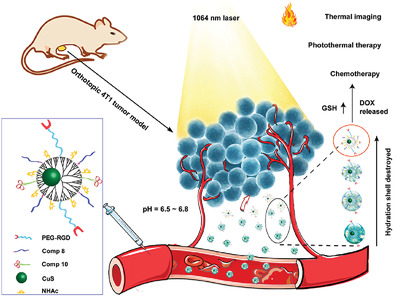
A unique design of an antifouling-dendrimer-based nanoplatform with dual pH- and redox-responsiveness beneficial for enhanced tumor delivery is reported. The created dendrimer–CuS nanohybrids with a CuS core size of 3.6 nm have a second near-infrared absorption feature, targeting specificity, and the ability to overcome different barriers of nanomedicine for enhanced tumor delivery, thus enabling excellent combination chemotherapy and photothermal therapy of tumors.
Implanting Cobalt Atom Clusters within Nitrogen-Doped Carbon Network as Highly Stable Cathode for Lithium–Sulfur Batteries
- First Published: 19 April 2021
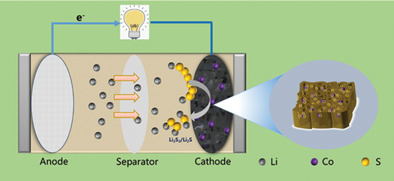
A 3D porous N-doped carbon network with embedded Co atom clusters (Co/PNC) is developed by pyrolyzing in molten NaCl. In Co/PNC, network carbon skeleton containing hierarchical pores and the doping of N and Co is subject to inhibit the shuttle effect. The optimized Co/PNC delivers a capacity of 1105 mAh g−1 with high stability in the lithium-sulfur cell.
Tailoring the Structure of Low-Dimensional Halide Perovskite through a Room Temperature Solution Process: Role of Ligands
- First Published: 21 April 2021
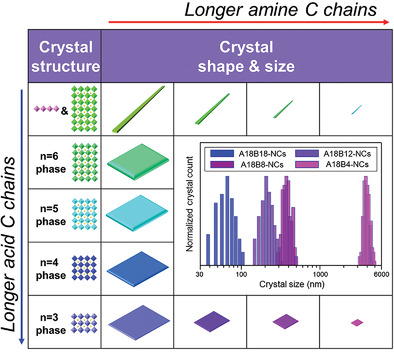
The role of the acid and amine ligands is identified by the trends of the changes in shape, size, and crystal structure of the perovskite nanocrystals. The reason for the effects of the acid and amine ligands and the mechanism of ligand binding on the nanocrystalline surfaces of the perovskite are investigated.
An In Silico Glioblastoma Microenvironment Model Dissects the Immunological Mechanisms of Resistance to PD-1 Checkpoint Blockade Immunotherapy
- First Published: 22 April 2021

A computational glioblastoma immuno-oncology model is established to systematically and quantitatively dissect the immunological mechanisms of resistance in the tumor microenvironment to PD-1 checkpoint blockade immunotherapy. Such an in silico experimentation and predictive model, based on the in vitro microfluidic chip-measured end-point data and patient-specific immunological characteristics, will help navigate and personalize immunotherapies for glioblastoma patients.
High Performance Generation of H2O2 under Piezophototronic Effect with Multi-Layer In2S3 Nanosheets Modified by Spherical ZnS and BaTiO3 Nanopiezoelectrics
- First Published: 22 April 2021
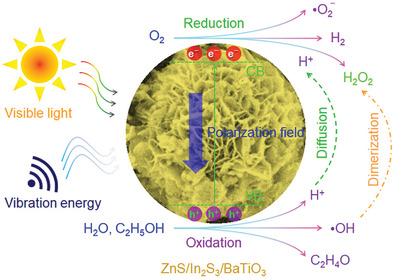
Piezopotentials allow to tune surface charges on piezoelectric semiconductors via vibration energy. Implementation of surface engineering causes strong increases in catalytic activity and selectivity on photocatalysts, but no efficient reactivity is obtained yet. A polarization field is built in piezoelectric ZnS/In2S3/BaTiO3 to promote effective separation and transfer of photogenerated electron–hole pairs enhancing the catalytic surface reactions for H2O2 production.
Scalable Manufacture of High-Performance Battery Electrodes Enabled by a Template-Free Method
- First Published: 25 April 2021
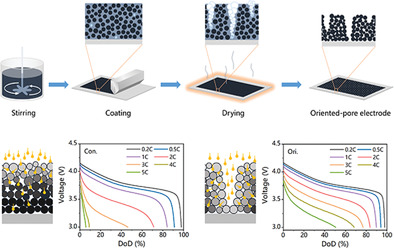
Scalable fabrication of high-performance thick electrodes is implemented in this work by a template-free approach, which is proven to be applicable to different active materials and compatible with roll-to-roll manufacture. The as-fabricated oriented-pore structure electrodes exhibit a seven times higher capacity compared to conventional structure electrodes at 5C rate and show both, a high power density and energy density.
An In Situ Artificial Cathode Electrolyte Interphase Strategy for Suppressing Cathode Dissolution in Aqueous Zinc Ion Batteries
- First Published: 28 April 2021
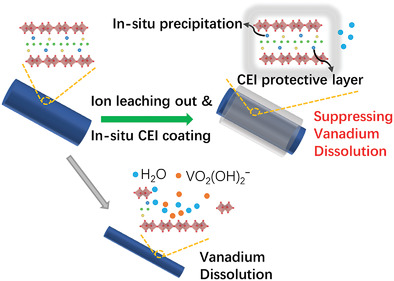
The spontaneous vanadium dissolution in aqueous electrolytes is one major problem in aqueous batteries. Here, an in situ artificial cathode electrolyte interphase (CEI) strategy is proposed to kinetically suppress the vanadium dissolution. This strategy is proven with the help of various technologies, and the CEI layer is verified to suppress cathode dissolution and prolong the cells’ lifespan.
In Situ Assembly of Ordered Hierarchical CuO Microhemisphere Nanowire Arrays for High-Performance Bifunctional Sensing Applications
- First Published: 30 April 2021
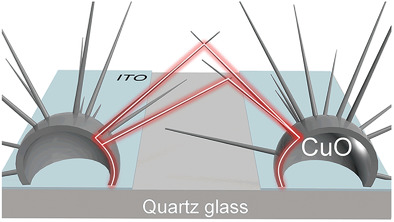
A novel methodology of in situ assembly of regularly bridged CuO microhemisphere nanowire arrays (RB-MNAs) devices by thermal oxidation of ordered Cu hemisphere arrays prepared by dewetting and evaporating patterned Ag/Cu/Ag films has been demonstrated. Bifunctional sensing of the RB-MNAs device exhibits much better sensing performance toward both trimethylamine molecules and UV–vis–IR light.
Mapping and Controlling Liquid Layer Thickness in Liquid-Phase (Scanning) Transmission Electron Microscopy
- First Published: 05 May 2021
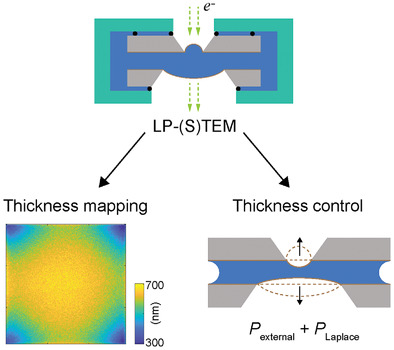
Real-time monitoring of nanoscale material processes in liquids by liquid-phase (scanning) transmission electron microscopy is advanced by rapid dynamic control and quantification of the liquid layer thickness. These methods enable performing the largest part of the experiment using a thick liquid layer to avoid confinement effects and adjusting to a thin liquid layer whenever needed for imaging at higher resolution.
Yolk-Shell-Structured Nanospheres with Goat Pupil-Like S-Doped SnSe Yolk and Hollow Carbon-Shell Configuration as Anode Material for Sodium-Ion Storage
- First Published: 07 May 2021
High-Index Faceted PdPtCu Ultrathin Nanorings Enable Highly Active and Stable Oxygen Reduction Electrocatalysis
- First Published: 12 May 2021
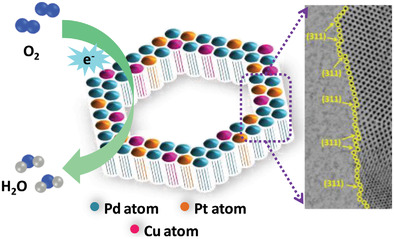
A kind of PdPtCu ultrathin nanorings with the surface dominated by the high-index facets is reported to achieve a very high specific activity and mass activity toward oxygen reduction electrocatalysis. The enhanced activity is mainly originated from the optimized oxygen adsorption energy, which is caused by the combination of high-index facets and the alloying effect of Cu.
A 3D, Magnetically Actuated, Aligned Collagen Fiber Hydrogel Platform Recapitulates Physical Microenvironment of Myoblasts for Enhancing Myogenesis
- First Published: 13 May 2021

A 3D, magnetically actuated collagen hydrogel platform enables combined control of extracellular matrix architecture and mechanical stimulation, which can effectively recapitulate the synergy of these physical microenvironmental cues of myoblasts in vitro. Synergistic effects of aligned fiber and mechanical stretch enhance C2C12 cell alignment and myotube formation. This facile platform holds great promises for generating physiologically representative microtissues for biomedical applications.
Supramolecular Tadalafil Nanovaccine for Cancer Immunotherapy by Alleviating Myeloid-Derived Suppressor Cells and Heightening Immunogenicity
- First Published: 13 May 2021
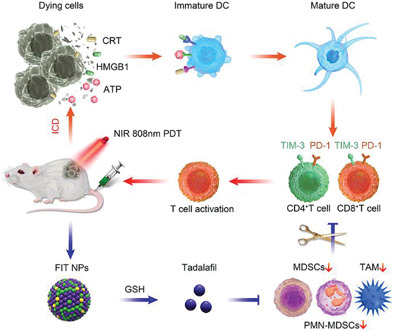
Tadalafil-based nanoparticles with high drug loading, deep tumor depth-penetration, and adequate therapeutic performance are reported for potentiating cancer immunotherapy by inducing immunogenic cell death effect and alleviating myeloid-derived suppressor cells. This strategy would provide an excellent example for the design of a Tadalafil-based immunotherapeutic system, furthest responding to these bottlenecks in the clinical transformation of cancer nanomedicine.
New TiO2-Based Oxide for Catalyzing Alkaline Hydrogen Evolution Reaction with Noble Metal-Like Performance
- First Published: 13 May 2021
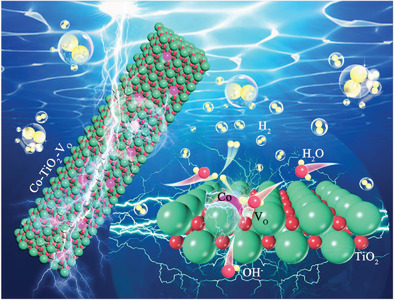
To efficiently activate titanium dioxides as a highly active electrocatalyst for the hydrogen evolution reaction, still remains a tremendous challenge and is rarely reported. In this paper, a novel anatase TiO2 is innovatively activated as a high performance hydrogen evolution reaction electrocatalyst by engineering catalytic active sites with proper lattice doping and partial reduction for surface active sites engineering.




